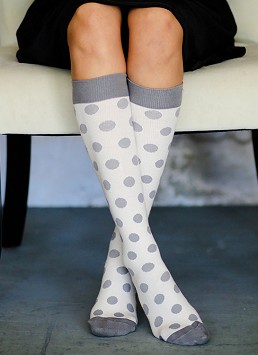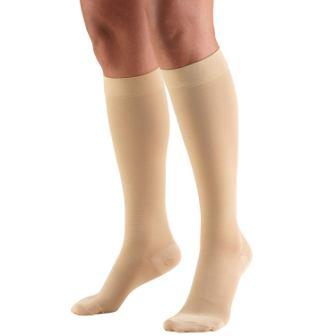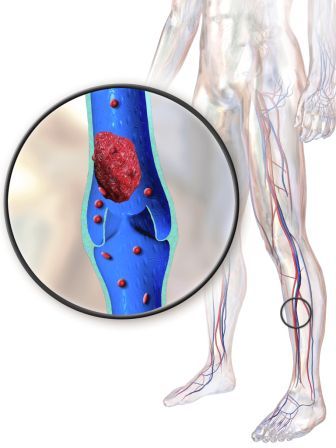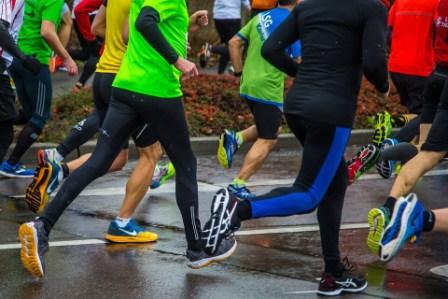Compression stocking are designed to improve blood flow. The improved circulation increases the oxygen level in the body, which lowers your risk of a number of health problems. Improper circulation can lead to severe aches, uncomfortable cramps, and even more dangerous health issues.
Enter: Compression Stockings 20-30 mmHG
If you’re looking to buy compression stockings for you, it’s important to have some knowledge about compression levels. Measured in mmHG (millimeters of mercury), compression level is the amount of pressure exerted by the stocking on the wearer’s legs. Compression Stockings 20-30 mmHG is one of the most popular products in the market.
Compression Support come in a range of compression levels.
Compression socks apply a graduated pressure on your legs ((highest at the bottom most points i.e. ankles). This encourages blood flow from your ankles back to your heart.

These medical grade devices are usually prescribed by health experts, but they have a number of general health benefits too. The right stockings for you can vary depending on your health condition.
When some people hear the words “compression socks,” they may cringe at the idea of wearing them. But rest assured, they are efficient for all users, irrespective of their age. Besides, they are not boring to look at; compression socks come in attractive colors and patterns that are appealing to the younger crowd.
20-30 mmHG Compression Stockings : An introduction
Compression stockings are stretchy socks that tightly fit your legs, gently squeezing them with the right amount of pressure. They help the veins and muscles in your legs to improve blood circulation, especially after a long and tiring day, they can ease tension in your feet.

20-30 mmHG Compression Stockings from Compro Gear are the most commonly prescribed socks by the doctors. These are designed to apply moderate pressure on the legs. These stockings are very effective in the treatment of mild to moderate health issues.
Often referred to as ‘Firm’ or ‘Class 1’ level compression socks, they offer an inexpensive, simple and effective solution to keep the blood from stagnating. Varicose veins, deep vein thrombosis, post-schlerotherapy and edema can be treated and prevented using 20-30 mmHG compression socks.
Let’s take a look at some of the benefits of 20-30 mmHG compression socks:
- They can help prevent and treat varicose veins (both moderate and severe). These socks are especially helpful during pregnancy.
- 20-30 mmHG compression socks are effective in post-sclerotherapy and post-surgical treatment. This can prevent spider and varicose veins from returning back.
- Compression Stockings 20-30 mmHG are helpful in treating both moderate and sever edema.
- These socks can help manage post-thrombotic syndrome and active ulcers.
- These compression socks can help in the treatment of superficial thrombophlebitis.
- They can help in the prevention of deep vein thrombosis (DVT).
- They can relieve orthostatic hypotension (low blood pressure when standing up).
Compression Socks: Types
Compression socks come in different lengths and for various purposes. For instance, DVT stockings end below the knee. Other than knee-high socks, you can get thigh-high socks, too. Compression sleeves come without the foot.
Based on the pressure applied by the stockings, the parts where the socks squeeze, there are three types of compression socks:
- Graduated Compression Stockings
Graduated compression stockings are knee-high socks that are tighter at the ankle and offer a higher level of compression. As they move up, the pressure gradually decreases. The pressure levels are measured in mmHG, for example, knee-high compression stockings 20-30 mmHG.
They are designed as per strength medical specifications and usually fitted by a professional. These can improve mobility, limit lower leg swelling or peripheral edema due to fluid buildup. Thigh-high or waist-length stockings prevent orthostatic hypotension and pooling of blood in your legs.
- Anti-Embolism Compression
When you need bed rest while recuperating from surgery, anti-embolism stockings or TED hose (Thrombo-embolic deterrent) can be used. Anti-embolism stockings decrease the likelihood of DVT (deep vein thrombosis.) They also offer gradient or graduated compression, but the levels of compression differ.

Similar to the first type, anti-embolism socks are also available on doctors’ advice.
- Non-Medical Support Hosiery
As the name suggests, non-medical support hosiery can be used without a medical prescription. You can buy them online or in pharmacies.
They are compression socks with an elastic support hose that provide relief for tired legs and reduce mild leg pains. They provide uniform compression with less pressure level than prescription compression stockings.
How Compression Stockings 20-30 mmHG Work?
The heart constantly pumps blood to all the organs through the arteries. Your heart is at the core of your circulatory system. The blood vessels act as hoses that carry blood at high pressure and in turn, oxygen to the cells. The impure blood is brought back through the veins.
Here is where the problem lies. When your leg and calf muscles are swollen or cramped, the veins in your legs and the lymphatic system will not be properly pressurized. That is to say that it gets difficult to move blood and other fluids back to the heart.

To get the fluids up, your body has to work against gravity. This cuts-off the circulation and blood starts to pool in your feet, making them feel heavy. As a result, this heavy feeling can affect your mobility.
Compression stockings (20-30 mmHG) fit snugly around your ankles and the pressure tapers off gradually towards the top of your legs. The pressure applied to your blood vessels helps them work better. The arteries can now relax and take oxygen-rich blood freely to the muscles and the veins can push blood back up, without pooling or clotting.
Health Benefits of All Compression Stockings
When used properly, compression stockings can give you the following benefits:
- Boosted blood circulation in legs
- Prevention of blood pooling in leg veins
- Elimination or reduction of pain due to varicose veins
- Prevention of DVT development in legs
- Reduced risk of orthostatic hypotension
- Prevention of venous ulcers
- Reversed venous hypertension
- Improved lymphatic drainage
- Reduced leg swelling
- Strengthened veins
Who Can Use Compression Socks
You are a good candidate to use compression socks if you are:
An At-Desk-Employee
Calf muscles are also known as second hearts since they act as a steady pump when they move. They exert pressure on the veins in your lower legs, allowing blood flow back towards your heart. But if you are habituated to a sedentary lifestyle, where these muscles move very little, blood may pool in the legs.
So, you can benefit from Compression stockings 20-30 mmHG if have an occupation where you sit at a desk for multiple hours every day. Compression stockings negate the effects of prolonged sitting and help relieve the swelling and aches in your legs.
Up on Your Feet
While walking exercises your calf muscles and encourages more blood flow, standing at a spot for long periods can reduce it. So, professions, where people need to be on their feet, can reduce the effectiveness of the circulatory system.
Retail employees, flight attendants, construction and manufacturing workers, hospitality and nursing staff are prone to feeling fatigued at the end of their shifts. Compression socks assist with proper blood flow, and you get energized while at work.
A Fitness Enthusiast
Sportsperson and fitness enthusiast workout with high intensity, but unfortunately, get sore muscles after completing their regime. They may postpone the next workout or change their schedule due to intense soreness.

Any inconsistency in their fixed regime can be detrimental to their success, or in meeting their fitness goals. So, they need to speed up their recovery process. Compression socks help post-exercise recovery and lessen muscle soreness.
A Frequent Flyer
Sitting for long hours causes blood to pool in your legs, and imagine what prolonged sitting in an airplane for over 20 hours will do. Traveling long distances in a cramped space where you cannot even stretch your legs, can increase the risk of developing DVT or blood clots.
As the travel time increases, the risk of getting blood clots goes up. When you land at your destination, your feet swell up and it may be difficult to even walk to the baggage claim. Compression stockings 20-30 mmHG can reduce the risk of clotting and increase circulation when you are on a long flight.
Choosing Compression Socks
You can buy a non-medical grade compression socks by yourself, but if you are facing any medical problems, it is always better to check with your doctor first. Rule out issues like nerve damage, peripheral arterial disease, skin infection, pulmonary edema, or others.
- Fabric and length: Compression socks are made of a variety of fabrics and their lengths range from knee-high to thigh-high. If you need compression stockings after surgery or for other medical reasons, your doctor will be the best judge of the length and fabric you need to purchase.
- Measure Measure Measure: If you’re in the market to buy compression stockings, it’s important to choose the right size for you. Only the right size of compression socks can offer you the comfort and benefits they’re known for. To make sure that you pick the right size, you’ll need to consider a few things. If you’re buying knee high socks, you’ll need to consider two measurements. – maximum width of your calves and the narrowest part of your ankles. If you’re shopping for thigh high stockings,follow the same measurements as above except here, you’ll need to stand up and measure your thighs. These measurements can be complicated. So, it’s better to take expert help if you’re confused.
- Pressure levels: For minor swelling, sore muscles, and people who fear DVT while flying can use moderate pressure stockings -15 to 20 mmHG. Medical grade stockings of higher compression – from 20 mmHG to over 40 mmHG, are suitable for people battling severe swelling, varicose veins, or someone recovering in bed, following a surgery.
- Time of use: Depending on the doctor’s advice or your need, you may use the socks continuously for a few hours and take them off at bedtime. There are some models which you can wear even while taking a bath. Compression stockings can be worn over socks, shoes, and slippers.
How to Wear Compression Socks
After choosing the compression socks for your requirement, the biggest challenge may be getting them on. It takes practice to master the proper technique. If this is your first time wearing them, you will need to be extra careful.
Particularly if you have selected thinner stockings, it may get tricky. Since they offer a snug fit and are meant to be tight to work effectively, any additional force you apply might tear them apart.
Step 1
Grab the sock by the toe.
Step 2
Fold or roll the rest of the stocking inside out.
Step 3
Put your foot into the sock.
Step 4
Roll out the stocking over your legs.
Step 5
Check if it is too tight or if there is a pain. Compression socks should tightly hug your calves, but not feel like they are getting strangled.
Step 6
Smooth out the socks and make them flat against your skin to avoid bunching.
Choose the right length for your compression stockings, otherwise, they bunch up at the top and act as a tourniquet, cutting off the circulation.
Research on Compression Stockings
There are numerous studies examining the link between compression stockings and prevention of several health conditions such as DVT. According to a recent study, examining the effect of compression socks on 1681 people who have undergone orthopedic surgery, it was found that participants who wore compression socks have less than 50 percent chances of developing DVT than the control group.
Another study confirms the effectiveness of graduated compression socks in reducing the chances of developing DVT during a hospital stay.
Things to Remember When Using Compression Socks
Compression socks offer a number of health benefits to the patients, but it’s important to wear them properly to get the best out of them. Let’s take a look at a few things you should keep in mind:
- Do not fold your stockings: Different compression socks are designed to address different circulation problems in your body. If your socks ares somewhat longer than you need, folding them over will not fix the problem. In fact, it can significantly increase the compression and cause more harm than good.
- Do not double up : There is no reason to wear another pair of socks over compression socks. These stockings are all you need to replace your normal socks.
- They are normally tighter than regular socks: It’s important to choose the right size of compression socks than going with the most comfortable ones. These stockings are usually tighter than the regular socks. They are made this way to serve some important purpose.
- Do not sleep in compression socks : The basic function of compression socks is to help blood flow freely against gravity, especially when you are sitting or standing. These stockings are not recommended when you’re sleeping.
- Use different levels of compression: It’s not advisable to wear the same level of compression stockings for an extended period of time (more than one year). Visit your doctor on a regular basis to know the right level of compression stockings for you.
Is there any specified duration for which compression socks should be worn?
It depends on a person. People who are wearing these for issues such as DVT can wear them all day long. They should however remove them before going to bed. And, people who are using compression stockings after surgery, it’s advisable that they should wear these while sitting or standing for a long period.
On the other hand, if you’re suffering from a medical condition, it’s recommended that you visit your doctor to know the best course of action for you. If you’re using them for non medical reasons such as during a long flight, you can talk with our experienced professionals about what would work best for you.
Now that you have all the information you ever need to buy compression stockings for you, it’s important to choose a trusted expert. When it comes to compression stockings, Compro Gear is one of the most trusted names. Do not hesitate to get in touch with our experts for any questions regarding buying a new pair of compression stockings.
Conclusion
Compression socks are no longer an eyesore; they are available in multiple colors, fabrics, styles, and patterns. You can get a pair that suits every event and your health needs, whether it is under a business dress or to deck up for casual comfort. No matter what you do and how old you are, you can find attractive compression socks that are a perfect fit for your personality. Grab a pair today, enjoy a stress-free blood flow, and stay healthy.
This page last updated December 16, 2022
